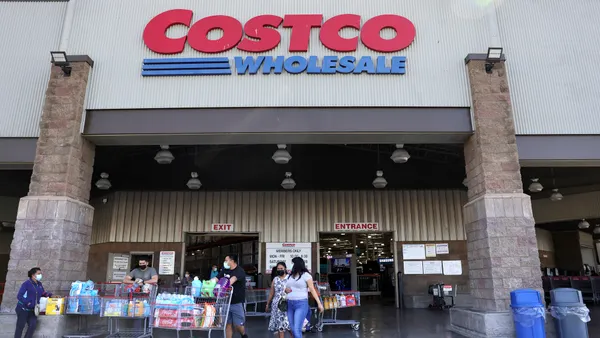Brief:
-
Best Buy, Patagonia and Kohl’s are among the leaders in mobile marketing strategies with strong investments in content and commerce, according to an in-depth study by research firm L2. Meanwhile, Sears, Acer and Prada are considered laggards for not devising a mobile branding strategy that regularly has deep links in mobile search results, strong creative and advanced content features to support omnichannel services, the study said.
-
L2 also grouped major brand apps by how much they prioritize marketing or content. New Balance, Nine West and Pier One Imports are "marketing-first brands" that show expertise in mobile advertising, understand geotargeting and invest in mobile search and other paid media formats to fuel conversion.
-
Glossier, Sephora and Gap fit into the "content-first brands" category that lets shoppers access a broad range of features on mobile, such as product videos, account functionality and store locators. These brands adapt existing content for the mobile environment and deploy innovative features specifically for mobile, L2 said.
Insight:
Mobile marketing is imperative for brands given how much time consumers spend on their devices. However, some brands continue to struggle with mobile because the use case is quite different from other channels, but considering the example of the leaders in L2's report can help brands begin to understand what is and is not working on mobile.
L2’s study offers dozens of recommendations on how brands can build effective mobile content and marketing strategies that not only provide standard features for apps and the mobile web, but also differentiate themselves from competitors with additional investments. Mobile sites must have basic features like account sign-in, store locators, search bars and expedited payments. To take things to the next level, brands need to add features that streamline the browsing experience, like personalized recommendations and auto-complete on checkout pages.
A winning mobile app strategy means supporting apps with regular updates, app store marketing, search advertising and promotion on the brand’s site. Brands also need to tailor apps to loyal customers rather than occasional shoppers, L2 recommends. Top brands provide a place for customers to collate their coupons, promotions and brand messages, and also simplify online and offline shopping with features like in-store mode, picture scanners and Touch ID.
Mobile marketing needs to include email, search and paid media. In addition, brands should develop content that not only works well in a mobile format, but also maintains continuity with stores, apps and other properties, L2 said. Emails to customers should have subject lines that are about 35 characters long to make them easy to read, especially on a smartphone with a small screen. L2 said search marketing strategies need to let potential customers see links to a website’s internal content to reach existing and prospective customers. The best mobile strategies include a click-to-call link on paid search, email content linked to apps and continuity among creative elements, the study said.














